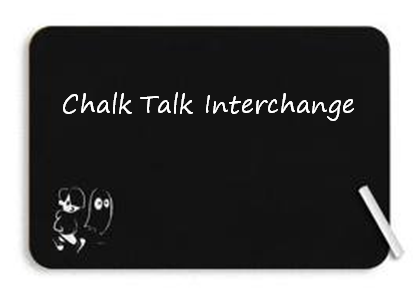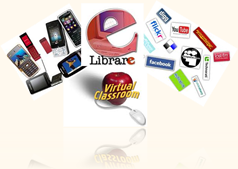Does technology intimidate you? It certainly does me. There are times I wonder how in the world I will ever figure out all of the new technologies that are emerging in our world. Technology comes in many forms. The number of technologies currently available could not possibly be discussed in a short amount of time and the discussions could possibly be endless. In order to ease into technology, here is a look at a select few I have hand picked , what they are, how they are being used and who might possibly use them. Lets see if we can wade through a few technologies together.
Social Networks/Blogs
Social networks have enabled us to let others know where we are, what we are doing, even where we are at any given moment. While it isn’t face to face communication, it is a means to stay in touch. Social networks have led to other arenas for communicating, such as the blog.
Blogs can be personal or professional. “Blogging is personal, and that’s a good thing. The effective blogger develops a relationship with his or her readers and, in so doing, earns a greater measure of credibility and trust while reaching an ever larger audience” (Wetzel, 2010, p. 62). Credibility and trust are two of the most important traits when building and continuing a business. Another tip from Wetzel (2010) on blogging, “blogging is not corporate speak; it’s not legal but is also not sloppy conversation, you need to project a conscientious attitude that you truly care about your subject and about providing quality content for your readers” (p. 63). It is possible to make a blog personal and professional, all at the same time.
Virtually Virtual Realties
Virtual worlds or virtual realities are also breaking onto the scene. While these are something “gamers” know about they are beginning to make an appearance in other areas. Virtual worlds/realities allow a person to engage in an environment without actually having the pitfalls of real life. For example, driving simulators are a form of virtual realities. They allow a person to sit behind the wheel of a car, drive the car, and then see how they would handle situations that may arise while driving, such as icy conditions or fog. According to the website driving simulators are beneficial to older adults. The simulation, along with a ‘coach,’ can help older adults improve their driving skills (Science Daily, 2011).
Virtual realities are making an appearance in education as well. Most virtual world learning is taking place in higher education institutes. Students who are entering college are entirely comfortable with technology and suddenly they are thrown into an arena that requires them to sit in classrooms, listen to lectures, and take notes, something that is almost foreign to them. Virtual worlds offer students a way to learn the content, and to learn to communicate within the virtual worlds (Dawley, 2009, p. 113).
E-books and Virtual Libraries
Books are another area that is going techno. Libraries are beginning to go digital with many having the ability for their patrons to download books straight to their computers. There are more than 400 real world librarians currently working in virtual libraries (Waller, 2008, p. 373). The ability to do most of the business one would do in a library is now available online. Then there are the digital books that allow readers to access millions of books and have them all in one compact, streamlined notebook. Everyone from students to leisurely readers can utilize virtual libraries and downloadable e-books. There is no end to the possibilities.
Cell Phones
Cell phones, while not new, are certainly a technology that is moving in new and amazing directions. Phones are no longer just for talking, they now offer the ability to text, surf the web, take pictures, shoot video and more. The cell allows users to create to do lists, track and manage calendars, as well as play music. Gone are the days of having to have a paper calendar or an organizer, now it is all right at the finger tips of those who have one. The cell phone is also making an appearance in classrooms with teachers using them to assign classroom assignments, check assignments, have students take polls or allow students to text the teacher when they have questions. There are teachers using the cell phone for Spanish students to record themselves so they can hear how they sound for a test (Armario, 2009, para. 9-11).
The world is moving and it is moving at a rapid speed. The number of technologies grows by leaps and bounds with new and innovative ideas breaking ground on a regular basis. Is it any wonder there is confusion and intimidation? With a bit of research and some thoughtful insight, technology can be less intimidating and more invigorating!
Sources:
Armario, C. (2009). Cell phones now teaching tools once banned at schools, the communication devices are becoming part of lesson plans. South Florida Sun - Sentinel, D.3. Retrieved January 28, 2011 from Sun Sentinel (Ft. Lauderdale). (Document ID: 1909694921).
Driving simulators help older adults improve their road skills. (2010, Jan. 14). Science Daily. Retrieved on January 29, 2011 from http://www.sciencedaily.com/releases/2011/01/110113131444.htm
Lisa Dawley. (2009). Social network knowledge construction: emerging virtual world pedagogy. On the Horizon, 17(2), 109-121. Retrieved January 26, 2011, from ProQuest Education Journals. (Document ID: 1880656431).
Vivienne Waller. (2008). Legitimacy for large public libraries in the digital age. Library Review, 57(5), 372-385. Retrieved January 26, 2011, from Research Library. (Document ID: 1497848401).
Wetzel, T.. (2010, October). To blog or not to blog. Rough Notes, 153(10), 62,64. Retrieved January 26, 2011, from ABI/INFORM Global. (Document ID: 2164426091).




